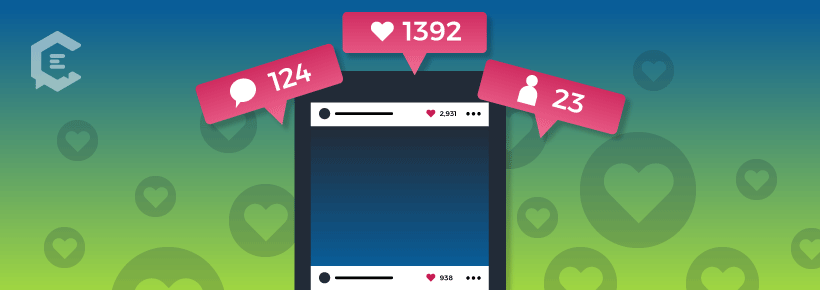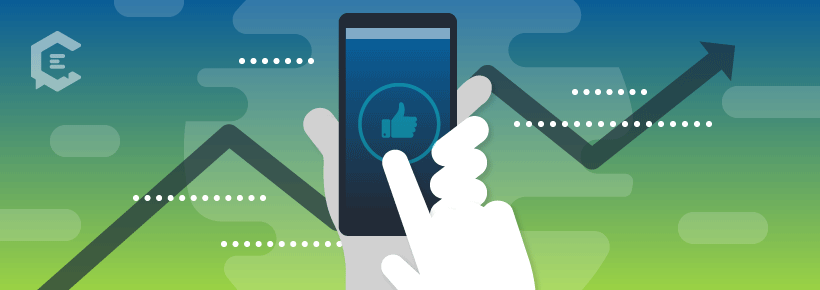As influencer marketing continues to reach and attract mass markets, journalists are eyeing the idea of creating a social media wave of their own. Though the debate is still out on the respectability of influencers in the age of media, their impact is proven by the numbers. In this series, we investigate the emergence of the influencer, the ethical challenges of writers who tap into this field, and the misconceptions of the role.
In part one, we take a little history lesson into the world of influencer marketing.
A lunchtime gander through Instagram fills your feed with endless, perfectly edited shots of strangers in idyllic locations. Or, those with a fresh face of makeup on YouTube who promise you can recreate their look… in less than five minutes. Then there are so-called digital nomads who are earning six figures from the shores of Bali or sitting atop a lush, green field overlooking the charming city of Prague, with a pilsner, of course.
Are you tempted to double-tap, follow, like or share? Probably so, considering millions upon millions do every day.
Whether you personally love them or hate them, influencers are a growing, dynamic field of marketing, allowing brands to tap into the habits of consumers through seemingly everyday people. With impressive multi-million followings, overachieving and zealous influencers sign contracts with a similar number of zeros, while micro-influencers have less numbers to report, but more impact with their endorsements. With lustful blue checks next to their handles, many journalists have started to teeter the line between traditional reporting and chasing after the cliche (and paycheck) that comes with influencer marketing.
Considering social media features are still in their infancy compared to newspaper or magazine advertisements or cable commercials, the emergence of the influencer is only beginning. But, if you’re confused on what exactly an influencer does, you’re not the only one. The job of an influencer is often up for debate: Do they really just post selfies and bring in six figures? Do they actually review a five-star resort before posting an unrealistic vacation picture from an overwater bungalow in Fiji? Do they use the products they rave about? Or own the dresses they offer a promo code for? Are they glorified bloggers — or even considered writers at all?
Here, a look at the history of influencers, and a glimpse into what they do day-in and day-out:
How did influencers become a thing?
If you ask the Founder of Babble Boxx, Sherri Langburt, mommy bloggers cultivated the rise of the influencer. As she explains, before the advent of social media platforms (from Pinterest to Facebook and Instagram) Internet users found solace in the comfort of the primitive world wide web. Here, a simple Ask Jeeves query could point them toward someone like them. Like, say, when new moms searched for similarly exhausted women during a middle-of-the-night feeding.
While the content of the early 2000s was more long-form copy, brands recognized the power of the parenting community, eventually enlisting them as promoters and essentially opening new verticals for experts. “Influencers began populating other areas like fitness/health, travel. The launch of Facebook, and soon thereafter Twitter, gave bloggers a new playing field: the ability to promote their stories to masses of people and reach new audiences by sharing merely snippets of content that did not require as much work to create,” Langburt continued. “Pinterest and Instagram opened the doors to storytelling without words, and over time some people migrated from blogging to focus on a specific channel as you see today with so many Instagram stars who have influence.”
Influencer marketing expert Jeff Fransen explains the success of influencers is often found in their accessibility. Especially since many (er, most) companies can’t afford to hire Kim Kardashian or Emily Ratajkowski to promote their product or service, influencers at various price points and effectiveness provide a runway to reach tailored demographics. Like Langburt, he gives credits to bloggers as the founding fathers (and mothers) to this leg of marketing, creating a synergy between startups and storytellers, and launching what he calls “the age of the influencer.”
Today, the age is golden — and most are hoping to reap a bit from the pie, through all social media platforms. “As major companies saw their competition growing stronger and stronger utilizing influencers, they eventually followed the trend and grew their budgets. Budgets started to be distributed to a variety of social networks, so there became a wide variety of influencers from Instagram stars and YouTubers to bloggers and Twitter leaders,” he explained.
How do you believe influencers became popular?
Consider those avenues that just didn’t make it, like Google+. Even with the megapower of one of the most profitable and authoritative companies in history behind it, engagement was startling low, making it a dead-in-the-water platform. The concept of influencers could have become a one-year wonder too, yet it has continued to soar. How come?
Langburt says unlike celebrities who feel impossible to compare yourself against, the unfiltered nature of bloggers allowed others to accept a raw approach to any and every topic. Though, sure, many Instagrammers lead carefully edited lives, most also share intimate details, allowing their followers to not only aspire to be like them, but feel like they’re virtual friends, too.
“People feel a connection to influencers because in most cases they are real people, just like them who are relatable and accessible,” she explains. They also help others weed through the vast amount of information circulating online — from what to shop for to how to master the cat-eye, and so on. “These influencers are an amazing resource if you are searching for the right recipe, checking out a new fitness fad, looking for the latest styles or planning a vacation. All the visuals make it easier than ever to swipe and find just what you need,” she adds.
Though bloggers have been beating out magazines on SEO terms for more than a decade, the popularity of influencer marketing is barely five years old, if you follow Fransen’s timeline. In an effort to help his now wife discover how to make an income via blogging, he ended up working at long-tail sponsored blog agency in 2013. As employee number three at their shared WeWork space, he quickly became an early adoptor of this sector of marketing, and has watched it excel at rapid speed.
“There wasn’t much competition, but there also wasn’t much interest. Brands all wanted a way to measure success and that didn’t exist. But as technology improved, so did the understanding that brands had in terms of trusting that all value can’t be measured directly with influencers,” he explained.
“From there, the industry grew, but at the end of the day, influencers have always been popular. We just have more ways to connect with amazing people and amazing storytellers. As individuals and as an industry, the trust that their audience has in their endorsements will affect the value of influencer sponsorships.”
What is an influencer?
So, they started from the blogosphere… and now they’re here? But what do they do exactly?
As an influencer herself and the president of her own media group, Kris Ruby explains the gig is demanding, all-encompassing, and of course, ever-changing. She compares an influencer’s job to a journalist’s, but with a more real-time approach: They review experiences and brands, but they are able to shed their opinion in the process. Many influencers will have niches — from travel or food to beauty or parenting — they hone in on their interest, and thus, find a targeted audience.
While you might associate a well-researched, multi-layer article (like this one!) an in-depth approach to a topic, influencers are able to document the play-by-play as it happens. “Social media moves at a much more rapid pace than traditional journalism. Instagram and Facebook stories all come out much faster and can be typically posted by an influencer up to ten times a day,” she explains.
So is it just attending events, being pampered and repeating the gig on a new beach somewhere? Not at all, according to Ruby, who says the diligence of an influencer to create and maintain their following is often overlooked or undervalued.
In a nutshell, here’s what she believes a job description for an Instagram influencer might entail:
- Finding and vetting relevant Insta-worthy opportunities.
- Coordinating and previewing the opportunities with the publicist rep of the location, brand and experience.
- Coordinating the actual photo of the experience and who will take the photo: Are they taking their own photos? And paying for that equipment? Are they bringing in outside photographers?
- Location scouting to see the views/angles others have taken at the same location and how their image will pop to get more likes.
- Hashtag research to increase visibility.
- Tagging research to increase visibility.
- Formulating an engaging caption to draw interest.
- Making sure the photo looks aesthetically pleasing with the rest of their feed.
- Properly tagging the post if it is a sponsored post from the brand partner, following all legal guidelines.
- Executing a contract if it is a paid post and complying with brand guidelines, yet not having it appear overly staged or promotional.
- Viewing stats of follow/unfollow and engagement metrics to see what type of content is performing better via analytics.
- Editing of photos and narrowing down up to 1,000 photos down to one final photo.
In terms of Instagram specifically, Fransen says followers matter: with his base minimum starting at 10,000 or more. And while an Instagrammer might spend endless time perfecting their brand, videos and photos, investing in pricey equipment, a YouTuber will do the same but via a different platform. Regardless, this repetitive process challenges influencers to continuously improve their postings, finding and cultivating their niche market. And hey, they often do this… solo.
As Langburt puts it, today’s influencers are renaissance professionals, enlightened by multiple skill sets. “Areas of expertise required to be a social media influencer include but are not limited to: subject matter expert, research analyst, writer, photographer, videographer, webmaster, marketer, salesperson and business development manager,” she explains.
“These individuals operate as free agents and must create content that is both intellectually and visually appealing, but that’s just the beginning. They are required to learn the ins and outs of publishing and promoting content online and then find ways to monetize their content. There is research to be done, contracts to review, sponsors to secure and reports to generate all by oneself.”











